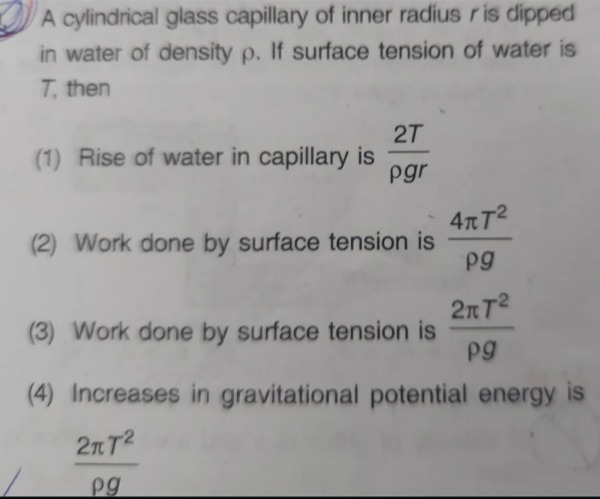Question
Question: A cylindrical glass capillary of inner radius $r$ is dipped in water of density $\rho$. If surface t...
A cylindrical glass capillary of inner radius r is dipped in water of density ρ. If surface tension of water is T, then

Rise of water in capillary is ρgr2T
Work done by surface tension is ρg4πT2
Work done by surface tension is ρg2πT2
Increases in gravitational potential energy is ρg2πT2
Options (1), (2) and (4) are correct.
Solution
-
Capillary Rise:
h=ρgr2T.
The capillary rise is given byThis confirms option (1).
-
Work Done by Surface Tension (Force Work):
F=2πrT.
The upward force due to surface tension along the circumference isThus, the work done by this force when the liquid rises by a height h is
Wst=F×h=2πrT×ρgr2T=ρg4πT2.This confirms option (2) is correct and shows that option (3) is not.
-
Increase in Gravitational Potential Energy:
ΔPE=mg2h=ρπr2h⋅g⋅2h=2ρπr2gh2.
The mass of the risen water is m=ρπr2h and its center of mass rises by h/2. So the increase in potential energy is:Substituting h=ρgr2T,
ΔPE=2ρπr2g(ρgr2T)2=2ρπr2g(ρ2g2r24T2)=2ρg4πT2=ρg2πT2.This confirms option (4).
